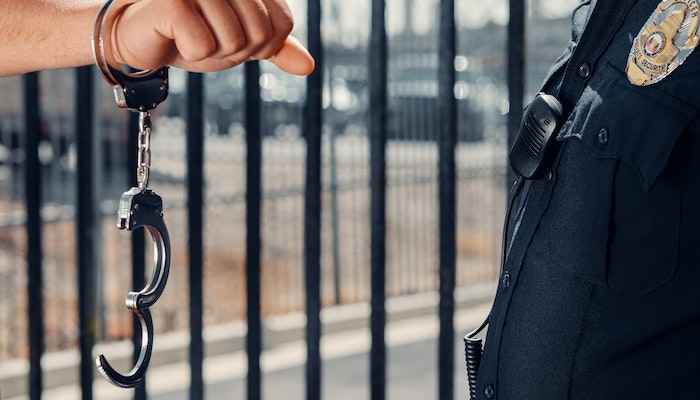
Did you know that according to the FBI’s report, in 2017, a violent crime was committed approximately every 25 seconds in the USA? In fact, a report published in Macrotrends states that the crime rate in the US increased by 6.02% in 2021 as compared to 2020.
These stats highlight the importance of a robust criminal justice system and not just well-educated professionals working in the criminal justice system but also well-aware individuals in society.
Criminal Justice is a field that delves into the intricacies of law, order, and the protection of society. For many, understanding the criminal justice system isn’t just about curiosity; it’s about making a difference. And what better way to gain this understanding than through a comprehensive education?
Now, when we think of education, the traditional image that comes to mind is that of brick-and-mortar institutions, bustling campuses, and lecture halls. However, the digital age has transformed how we learn. Opting for an online degree offers several advantages. Firstly, it provides the flexibility to learn at your own pace, whether you’re a working professional, a stay-at-home parent, or someone juggling multiple responsibilities.
Moreover, online degrees often provide access to a diverse range of resources. From e-books to video lectures, from interactive quizzes to discussion forums, students can immerse themselves in a rich learning environment. Also, many online courses are taught by seasoned professionals who bring real-world experience to the virtual classroom. Hence, a criminal justice bachelors degree online program is an excellent choice for anyone who has the passion and ability to defend the innocent and make criminals pay for their crimes.
UNDERSTANDING THE CRIMINAL CASE PROCESS
The world of criminal justice is vast and multifaceted. Also, it is worth mentioning that each state has its own laws, so what might be applicable in one might not be applied in another state. However, this article aims to highlight some general stages in the criminal justice system in the USA.
STAGE 1: REPORTING & INVESTIGATION
Imagine a scenario where someone witnesses a crime. The first step in the criminal case process begins with that individual – the witness – reporting the crime to the authorities. This act of reporting is crucial. It sets the wheels of justice in motion.
Once the crime is reported, law enforcement swings into action. Officers might visit the crime scene, interview witnesses, and gather preliminary evidence. This phase, known as the investigation, is similar to piecing together a puzzle. Every bit of information, no matter how trivial it might seem, could be the key to solving the case. The primary goal here is to determine if a crime indeed took place and, if so, identify potential suspects.
STAGE 2: ARREST & CHARGES
Following the investigation, if law enforcement believes they have enough evidence, they might make an arrest. This doesn’t necessarily mean the individual is guilty; it simply means there’s sufficient reason to believe they might be involved in the crime.
After the arrest, the case is handed over to the prosecutor’s office. It’s the prosecutor’s job to review the evidence and decide whether to file formal charges against the suspect. This decision isn’t taken lightly. The prosecutor must be confident that they have a strong case, as the next stages involve the court and potential trial.
STAGE 3: INITIAL APPEARANCE & BAIL
Once charges are filed, the defendant (the individual charged with the crime) is brought before a court for their initial appearance. This is a pivotal moment. The judge informs the defendant of the charges against them and decides on the matter of bail.
Bail is essentially a financial guarantee that the defendant will return for subsequent court dates. Depending on the nature of the crime and the defendant’s history, bail might be granted or denied.
STAGE 4: PRELIMINARY HEARING & GRAND JURY
After the initial appearance, the next step is the preliminary hearing. This is a crucial stage where the court determines if there’s enough evidence to move forward with a trial.
During this, both the prosecution and defense present their sides. The prosecutor shows the evidence they have, while the defense can counter and question its validity. If the judge believes there’s enough evidence, the case moves forward.
In some places, instead of a preliminary hearing, there’s a grand jury. This is a group of people who review the evidence and decide if there’s enough for a trial.
STAGE 5: ARRAIGNMENT & PLEA
The arraignment is the next step. Here, the defendant hears the formal charges against them in court. It’s also the time when they enter a plea. There are three main pleas: guilty, not guilty, or no contest. A guilty plea means the defendant admits to the crime. Not guilty means they deny it. No contest means they don’t admit guilt but also don’t dispute the charges.
The plea is vital. It can shape the direction of the case. If the defendant pleads guilty, the next step might be sentencing. If they plead not guilty, the case could go to trial.
STAGE 6: PRE-TRIAL MOTIONS & DISCOVERY
Before the trial starts, both sides get ready. This preparation phase is called discovery. During discovery, both the prosecution and defense share information. They show each other the evidence they have. This sharing ensures that both sides know what to expect during the trial.
There are also certain requests made to the court known as pre-trial motions. For example, the defense might ask the court to leave out certain evidence. Or the prosecution might ask for specific witnesses to testify. The judge then makes a decision for these requests.
STAGE 7: TRIAL
The trial is the stage most people are familiar with, thanks to movies and TV shows. It’s where both sides present their case to either a judge or a jury. The prosecution tries to prove the defendant’s guilt. The defense aims to show there’s doubt about this guilt.
During the trial, witnesses are called, evidence is shown, and both sides make arguments. After everything is presented, the jury (or sometimes just the judge) decides if the defendant is guilty or not guilty.
STAGE 8: SENTENCING & APPEALS
If the defendant is found guilty, they will be sentenced. This is when the judge decides the punishment, which depends on the crime and other factors.
After sentencing, there’s still a chance for the defendant. They can appeal the decision. An appeal is a request to a higher court to review the case. The defendant might feel there was an error during the trial. If the higher court agrees, they might change the verdict or ask for a new trial.
WRAPPING UP
From the moment a crime is reported to the final verdict, the steps in the criminal justice process ensure fairness and justice. These stages make sure that every person gets a fair chance, whether they’re the one accused of a crime or the victim.
However, understanding this process is essential. It shows the care and thought put into making sure justice is served. It also highlights the importance of having knowledgeable people in the system. This understanding often starts with education, like studying criminal justice. By knowing the process, we can all play a part in ensuring our justice system works for everyone.





